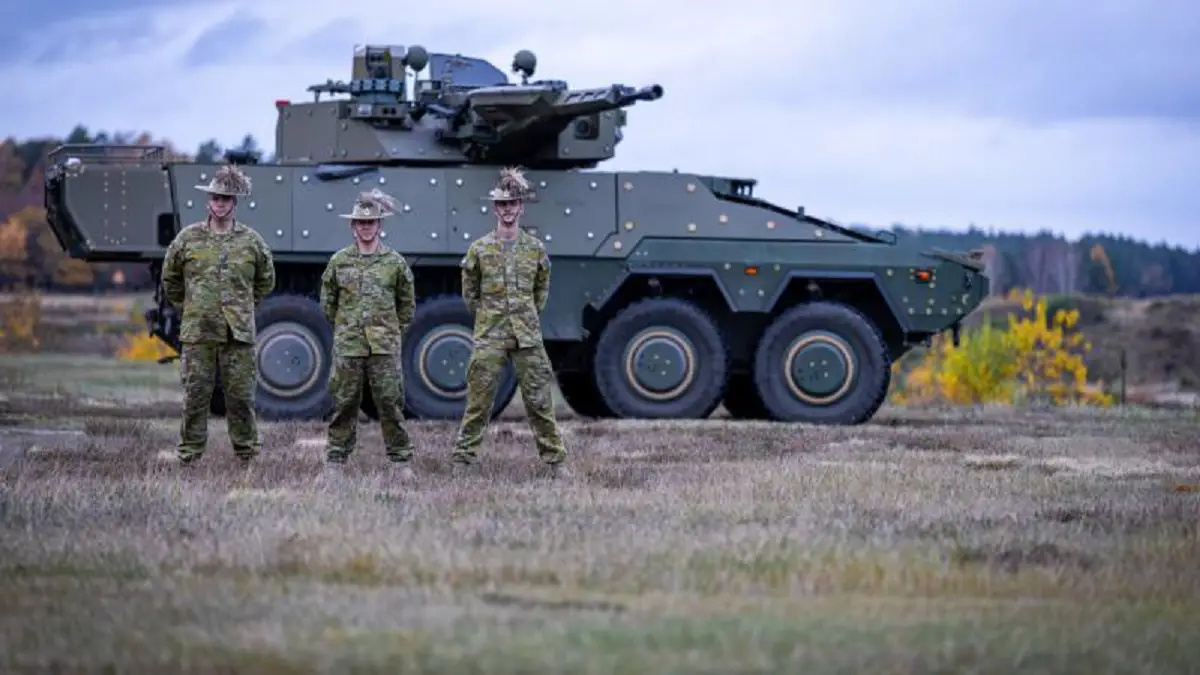As the Australian Army prepares to take delivery of the Block II Boxer combat reconnaissance vehicle (CRV) from this year, soldiers who will be operating them have been contributing to the vehicle’s future design. Three soldiers from 2nd/14th Light Horse Regiment (Queensland Mounted Infantry) (2/14 LHR [QMI])were involved in testing at the Rheinmetall site in Unterluss, Germany, late last year, where the vehicle’s Lance 2.0 turret was designed and initial production has commenced. Tests included firing the MK30-2 cannon and MAG58 machine gun in extreme weather conditions, as well as testing the new programmable munitions capability.
Crew commander Lance Corporal Ben Crawford and driver Trooper Liam Skinner fired 30mm training and programmable rounds from the MK30-2 Cannon in the Block II turret. The visit included a brief on the Block II vehicle design, operation of the combat intelligence, surveillance and reconnaissance system and new weapon control systems. Development of these systems included input from 2/14 LHR soldiers, leveraging their experience with the Block I vehicles. Trooper Skinner was also impressed with the strong focus on crew safety. Soldiers participated in a working group with Rheinmetall in Kassel to support future design options for Boxer with an active protection system. They were also briefed on the ballistic and blast testing program in Germany and Australia.

“The implementation of an emergency escape hatch for the driver on the Block II design ensures improved survivability. Seeing lessons learned from Block I now being implemented into Block II provided me with confidence moving forward. I found it incredibly beneficial to see the input that soldiers from 2/14 LHR (QMI) have made to the design of Block II Boxer, particularly in the crew operation of the weapon systems, and be able to tell them how it has been implemented,” Lance Corporal Crawford said.
Sergeant Chris Hughes said,“One of the highlights was being exposed to the new electronic systems that enable the Block II Boxer CRVs to manage combat information, communications and weapon systems. The combat intelligence, surveillance and reconnaissance system in Boxer provides not only the commander but all crew within the vehicle a situational awareness advantage on the battlefield,” Sergeant Hughes said.
LAND 400 Phase 2 will modernise Army’s Armoured Fighting Vehicle capability, which will provide mounted support to Defence operations for decades into the future, but most importantly will enhance the safety, security and protection of Australian troops. The Boxer CRV will replace the Australian Light Armoured Vehicle, which has seen extensive operational service since its introduction in 1996. Defence has contracted Rheinmetall Defence Australia to deliver and support 211 Boxer 8×8 Combat Reconnaissance Vehicle for the Australian Army. The Boxer CRV will be delivered in two blocks, known as Block I and Block II. Army received 25 Block I Boxers between 2019 and 2021 to provide an interim cavalry capability. The delivery of the remaining 186 Block II vehicles will begin this year.
















